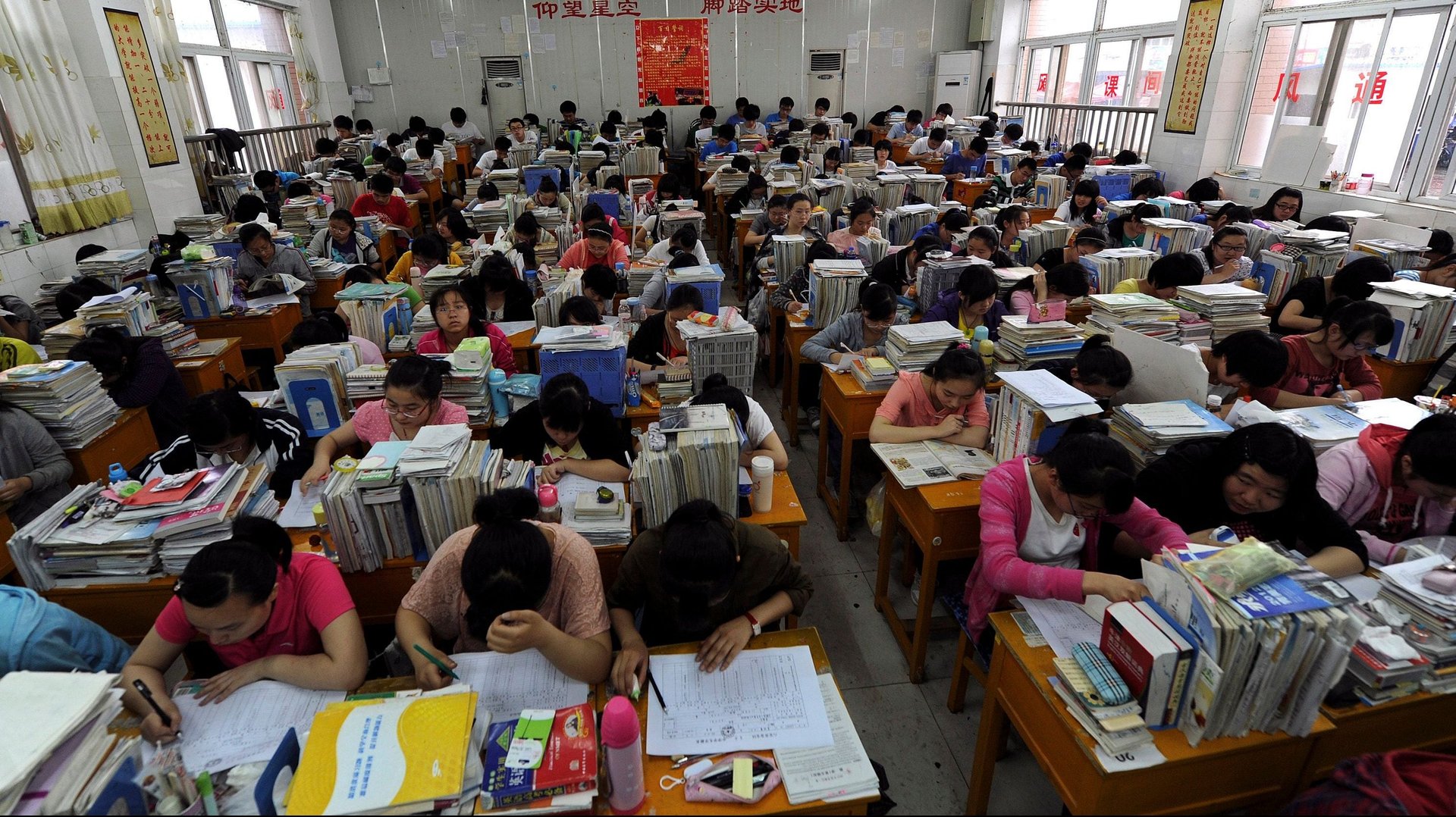US colleges are warming up to China’s toughest exam
In recent years a small handful of private US universities began accepting gaokao scores for college admissions—a sign of the growing overseas recognition for one of China’s toughest exams. Now, for the first time, a US state university will too.


In recent years a small handful of private US universities began accepting gaokao scores for college admissions—a sign of the growing overseas recognition for one of China’s toughest exams. Now, for the first time, a US state university will too.
The University of New Hampshire (UNH), a state university with around 15,000 students, will begin to admit Chinese students based on their gaokao scores, without having to see scores from the usual college exams, the SAT or ACT, first. Applications are due by Oct. 1 and students will be able to enroll by January—a semester earlier than usual. According to the New Hampshire Union Leader paper, Chinese students make up nearly half of UNH’s international students. The university, which set up a bilingual page for the application process, says it’s also waiving a $65 application fee and accepting results from the Duolingo online test in place of the usual English skills testing.
Erika Mantz, head of media relations for the university, told Quartz that the decision was “part of UNH’s commitment to attracting more and stronger applicants from around the world.”
Gaokao, the grueling college-entrance exam, is taken over two days across China every June, and many students spend a year preparing for it intensively. Of the more than 9 million students who take it, only 2% among them (link in Chinese) will get good enough scores to enter top-ranked universities in China.
Outside China, the gaokao is used for college admissions in Canada (pdf, p.2) Australia (pdf), and New Zealand (pdf). In the US, acceptance of the exam has been slower—only a handful of small private universities like St. Thomas University, University of San Francisco, and Suffolk University are accepting gaokao scores in their admissions process, starting around 2015. For the gaokao, the UNH decision is the biggest sign of stateside recognition yet.
“The gaokao admission program has been a success so far,” Jason Opdyke, USF’s assistant vice president for international admission, told Quartz via email. “We have met our goal of enrolling an average of 5-10 students per year, and as a collective group, they are outperforming our other Chinese students by a considerable margin. The type of gaokao students we have targeted are bright students who were clearly prepared to succeed at the highest academic levels.” The school, which has about 11,000 students, presently has over 880 Chinese students enrolled.
US universities have made greater efforts to attract Chinese students in recent years to boost revenues, and as international student enrollment has fallen under the Trump administration. During the 2016 to 2017 academic year, 350,755 Chinese students came to the US, and contributed about $12 billion in tuition and living expenses to the economy, or over 30% of the total generated by international students. Many parents in China spare no financial effort in supporting their children’s education, and studying abroad has become an increasingly popular choice in the last decade.
In China, many have expressed doubts that the gaokao is a good measure of a student’s ability, as it seems to reward purely rote learning. However, Paul Fitzgerald, president of the University of San Francisco, notes that there are similar doubts about the traditional US admissions test, the SAT. “Many studies have shown that the SAT is not a very good predictor of how well students will do at university,” he said. “[And gaokao] tests whether students are able to master a given body of knowledge, as well as their ability to work hard and consistently.”
Correction, June 22: An earlier version of this story incorrectly attributed the University of San Francisco remarks to Kellie Samson, of USF’s communications office.